Apr 29, 2025 11:53 AM
Vocalist Andy Bey Dies at 85
Singer Andy Bey, who illuminated the jazz scene for five decades with a four-octave range that encompassed a bellowing…
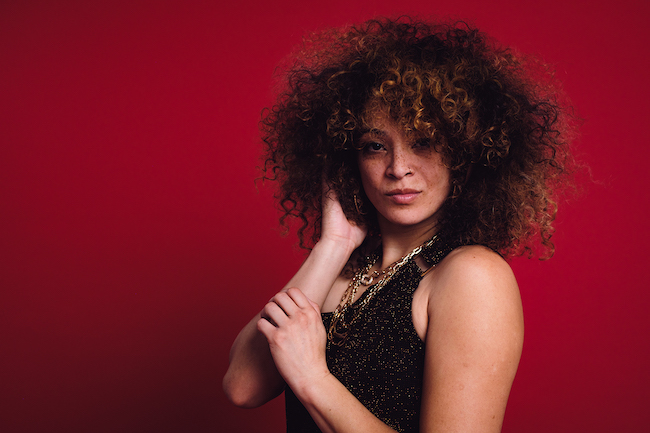
“There’s nothing quite like it,” Springs says of working with an orchestra. “It’s 60 people working in harmony in the moment. Singing with them is kind of empowering but also humbling at the same time.”
(Photo: Eli Sethna)When it came time to pose for the cover of her new album, Lady In Satin — a tribute to Billie Holiday’s 1958 classic LP of torch songs recorded with a full orchestra — the question for Kandace Springs was, “What do I do about the ’fro’?”
Springs, a sultry songstress with four previous albums to her credit on Blue Note and other labels, is well known for her luxuriant, cop- per-colored Afro curls. But to pay homage to Lady Day, the cover concept had her pulling her mane back into a Holiday-esque updo, complete with an artfully placed gardenia on the side.
“My girlfriend came and did my hair, and we winged it,” she says. “We actually took the picture right here in my living room. We got a background and pulled it off ourselves. She wet it down real slick and pulled it back and gelled it. And she was like, ‘OK, now you’re gonna look like Billie.’”
Kandace Springs reveres Billie Holiday but doesn’t sound anything like her. Wisely, she doesn’t even try on the new release, which mirrors the original in its song selection and orchestral accompaniment, played by the 60-piece Orquestra Clássica de Espinho from the Portuguese city of the same name. The song list includes such archetypal ballads of heartbreak as “You’ve Changed,” “I’ll Be Around,” “You Don’t Know What Love Is” and “I’m A Fool To Want You.”
The 36-year-old vocalist and pianist has sung with many a big band but, prior to Lady In Satin (SRP Records), she has not been backed by a symphony orchestra. Known for her smoky, soulful vocal style that channels a range of influences, from Roberta Flack and Nina Simone to R&B masters like Luther Vandross, Springs has previously performed with the Metropole Orkest (Netherlands), WDR Big Band (Germany) and the Pacific Jazz Orchestra (United States).
Her usual vocal accompaniment, however, is her own blues-inflected piano and her two accomplished side women: the Oberlin- and Juilliard-educated Caylen Bryant on bass and backing vocals; and drummer Camille Gainer-Jones, who has played in the bands of Diana Ross, Alicia Keys and the late Roy Ayers. The trio is also capable of some ethereal group harmonies, as when Springs calls on them to sing along with her on the coda of “Angel Eyes” in a live version posted to YouTube.
Springs’ four previous albums embodied that stripped-down, acoustic jazz esthetic: 2016’s Soul Eyes, 2018’s Indigo and 2020’s The Women Who Raised Me (a tribute to her vocal jazz influences), all on Blue Note, followed by Run Your Race (SRP Records) in 2024, which included Bryant and Gainer.
At her house in Nashville, where she was born and raised, she is surrounded by vintage keyboards. The living room, which doubles as a studio, is dominated by a 9-foot 1940 Baldwin concert grand piano. Via Zoom, she showed off her collection of Wurlitzer and Rhodes electric pianos, including one that had been played by Ray Charles and Lionel Richie. She’s also a collector — and restorer — of vintage cars.
“I mess with cars still, all the time,” she laughs. “I just sold a couple, too, this past week. I love gear, cars and pianos. That’s my kryptonite.”
Although she performs all over the U.S. and Europe and as far away as Japan and South Africa, Nashville is her place to unwind. “When I meet people in Nashville, they say, ‘What do you do?’ and I say I’m a singer. Then they ask, ‘So, when are you playing next time here?’ But I hardly work in Nashville at all. I’m here mostly because my family is here.”
Early in her career, when she was signed to Epic Records, she spent a couple of years living in the Murray Hill section of Manhattan, but never quite got used to it. “I’m really a country girl at heart,” she says, with a faint twang. “I ended up bringing my big Jeep Wrangler up there from Nashville, driving it everywhere with the big wheels, so at least I’d have a little dose of country. I’d go to the gigs in it.”
In 2014, Prince turbocharged her career after he invited her to appear with him at a Paisley Park concert to celebrate the 30th anniversary of the album and film Purple Rain. He once remarked that she has “a voice that could melt snow.” With the help of her managers, songwriters Carl Sturken and Evan Rogers, she secured an audition with Blue Note’s Don Was, leading to a record deal.
Being an entertainer runs in the Springs family. Her father, Kenneth “Scat” Springs, who died in 2021, was a noted singer, often working as a backing vocalist for top-tier artists including Aretha Franklin, Garth Brooks and Vince Gill; he also sang locally with a funky group that did James Brown covers. Young Kandace accompanied him to many of his own gigs and soaked it all in.
Those influences show in her previous albums, which are eclectic. She has an instinct for picking songs from almost any era and genre — from American songbook standards like “Angel Eyes” and Duke Ellington’s “Solitude,” to modern R&B and pop classics like “I Put A Spell On You” and “People Make The World Go ’Round” (made famous by the Stylistics), to her own songs, often written with Sturken and Rogers.
The Lady In Satin project came along at the right moment. Springs had been wanting to sing more Lady Day songs — her haunting rendition of “Strange Fruit” has been a staple of Springs’ repertoire for years — when she received an offer from a Portuguese orchestra to present a Billie Holiday tribute. The Orquestra Clássica de Espinho is an ensemble of mostly young professional and student musicians that evolved from the student orchestra of a Portuguese music conservatory. The concert and subsequent album feature new orchestrations by European arrangers William Goodchild, Nuno Peixoto de Pinho, Daniel Bernardes, Carlos Azevedo, Pedro Moriera and Telmo Marques, all inspired by the Ray Ellis orchestrations for the original Lady In Satin.
From their first rehearsal together, Springs was awestruck by the beauty of the sound. “It was just enchanting,” she said. “There’s nothing quite like it. It’s 60 people working in harmony in the moment. Singing with them is kind of empowering but also humbling at the same time.” She likens the feeling to playing on a sports team, “when you make those passes and you get that play — it’s like that.”
They rehearsed for two days before a concert in the Auditório de Espinho Academia in December 2023. The album used takes from both the rehearsals and concert. Springs was particularly taken with the three young back- ground singers, two female and one male, whose 1950s-style vocals are subtly present in the final mix, adding a period authenticity. “It’s so satisfying when you hear that. They were young kids, and their pitch was fantastic. I was like, ‘Y’all sound so good. I don’t know how you’re doing that!’”
She decided early on not to imitate or emulate Holiday. Rather, she was convinced that the only way to interpret the songs persuasively was to be true to her own vocal instincts, a style influenced by the great singers who followed Holiday, especially artists like Simone, Flack, Donny Hathaway, Sade and Vandross.
“I can impersonate a lot of people, but I can’t really sing like Billie. I decided I’m not even gonna try.”
She acknowledges she took risks on the album, singing some licks and runs, and throwing in occasional asides, that Lady Day wouldn’t have imagined. “But I had to make the songs my own,” she said. She did extensive preparation over six months. “I sat with each song, singing them over and over. Some I actually learned how to play and sing, like ‘For All We Know,’ which now I play in my shows, ‘You’ve Changed’ and ‘I’m A Fool To Want You’ — oh, I love that song.”
She also listened to interpretations by other singers she admires.
“The way Billie interprets a song, sometimes it was a little harder to nail exactly the note she was on. Or she would kind of sing through a note or gloss over it. And so sometimes my brain couldn’t quite figure out where it was.” That’s when she turned to other singers, including Ella Fitzgerald, who could sing melodies as precisely as a piano. “She will sing every note exactly, pretty much, and then she’ll ... go off and do her little scat thing and pretty much murder everybody. So, I listened to a lot of Ella’s versions, like (her) ‘You’ve Changed.’ I listened to Frank Sinatra’s version of ‘I’ll Be Around.’ He sings it very clearly. Whew, that man! He could sing.”
For Edward Redding’s classic “The End Of A Love Affair” she listened to Chaka Khan’s version for inspiration; for “I Get Along Without You Very Well,” Diana Krall’s version. “Diana was an influence on me. Vocally, I didn’t take a whole lot from her, but I got inspiration from her as a female singer and pianist. I’ve been listening to her since I was a little kid. Oh, and Shirley Horn’s version of ‘But Beautiful’ — that’s my jam.”
In her concerts and her other recordings, selecting the right song has always been crucial, Springs says. She listens broadly and is more interested in finding the right song than staying within a particular genre. “It’s whatever moves me. You want to know one that’s gonna throw you way off? Coldplay. Their stuff is so moving to me. I listen to them and [pretends to sob and wipe away tears] I’m like, ‘Oh, my god, I need to cover this stuff.’ If it moves me, I don’t care what genre it is. Chris Martin! I know it sounds crazy, but sometimes I feel like I hear a little bit of a Nina Simone in the way he sings some songs, like ‘Oceans.’ It’s very odd; you wouldn’t expect it.”
Although she’s attracted to other styles, her commitment to jazz holds strong. When she first signed with Sturken and Rogers, they experimented with moving into hip-hop, in hopes of drawing a bigger audience. “So, I tried it for a second, but it wasn’t really me. My heart was always jazz. Ever since my dad gave me my first Norah Jones CD. And I listened to Nina and Diana and Billie. I just loved jazz. Hip-hop is cool. I like it, but it doesn’t move my soul like jazz always did.”
Prince and her father, Scat, encouraged her to be true to her first love. “He and my dad were always like, ‘You need to stick with your hardcore jazz. The more straightahead stuff is where you shine the most.’
“Prince helped keep me on the right track, with sticking with ‘organic’ music, playing instruments live, acoustic piano and upright bass, and not overdoing it with [electronics]. That’s why we’re a trio today, just me and the girls. And we make a lot of noise, just us three. We bring a lot of emotion. So, if you come see our show, you’ll laugh, you’ll cry a little — everything.” DB
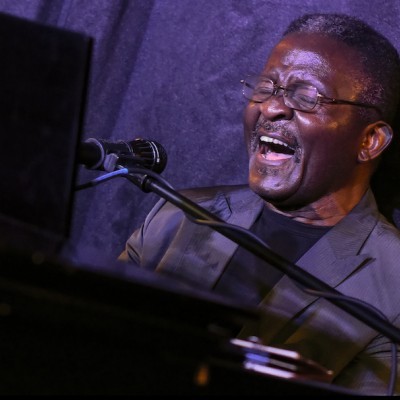
“It kind of slows down, but it’s still kind of productive in a way, because you have something that you can be inspired by,” Andy Bey said on a 2019 episode of NPR Jazz Night in America, when he was 80. “The music is always inspiring.”
Apr 29, 2025 11:53 AM
Singer Andy Bey, who illuminated the jazz scene for five decades with a four-octave range that encompassed a bellowing…
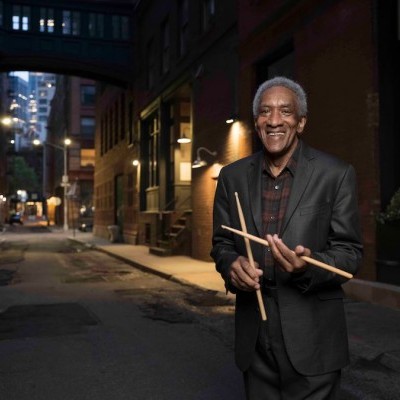
Foster was truly a drummer to the stars, including Miles Davis, Sonny Rollins and Joe Henderson.
Jun 3, 2025 11:25 AM
Al Foster, a drummer regarded for his fluency across the bebop, post-bop and funk/fusion lineages of jazz, died May 28…
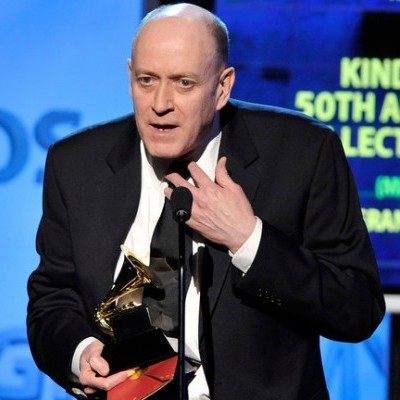
Davis was a two-time Grammy winner for liner notes.
Apr 22, 2025 11:50 AM
Francis Davis, an august jazz and cultural critic who won both awards and esteem in print, film and radio, died April…

“Branford’s playing has steadily improved,” says younger brother Wynton Marsalis. “He’s just gotten more and more serious.”
May 20, 2025 11:58 AM
Branford Marsalis was on the road again. Coffee cup in hand, the saxophonist — sporting a gray hoodie and a look of…
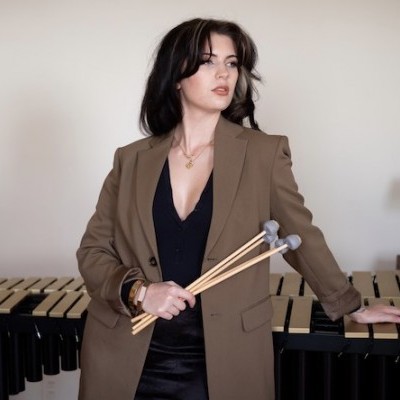
“What did I want more of when I was this age?” Sasha Berliner asks when she’s in her teaching mode.
May 13, 2025 12:39 PM
Part of the jazz vibraphone conversation since her late teens, Sasha Berliner has long come across as a fully formed…